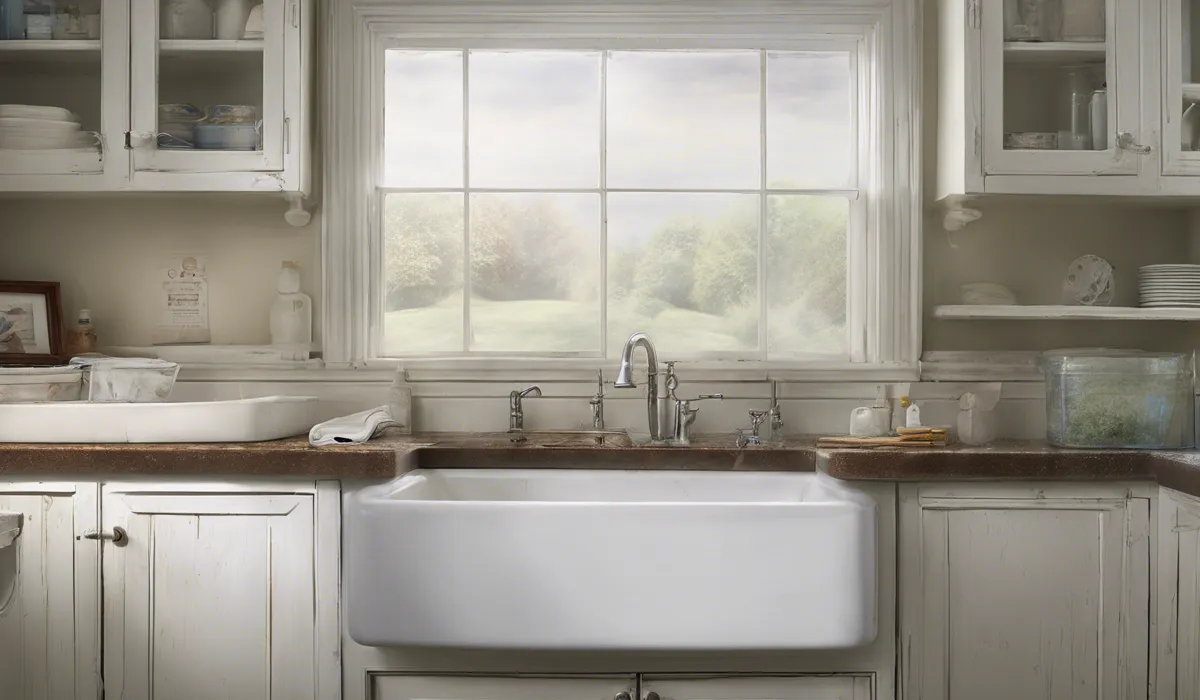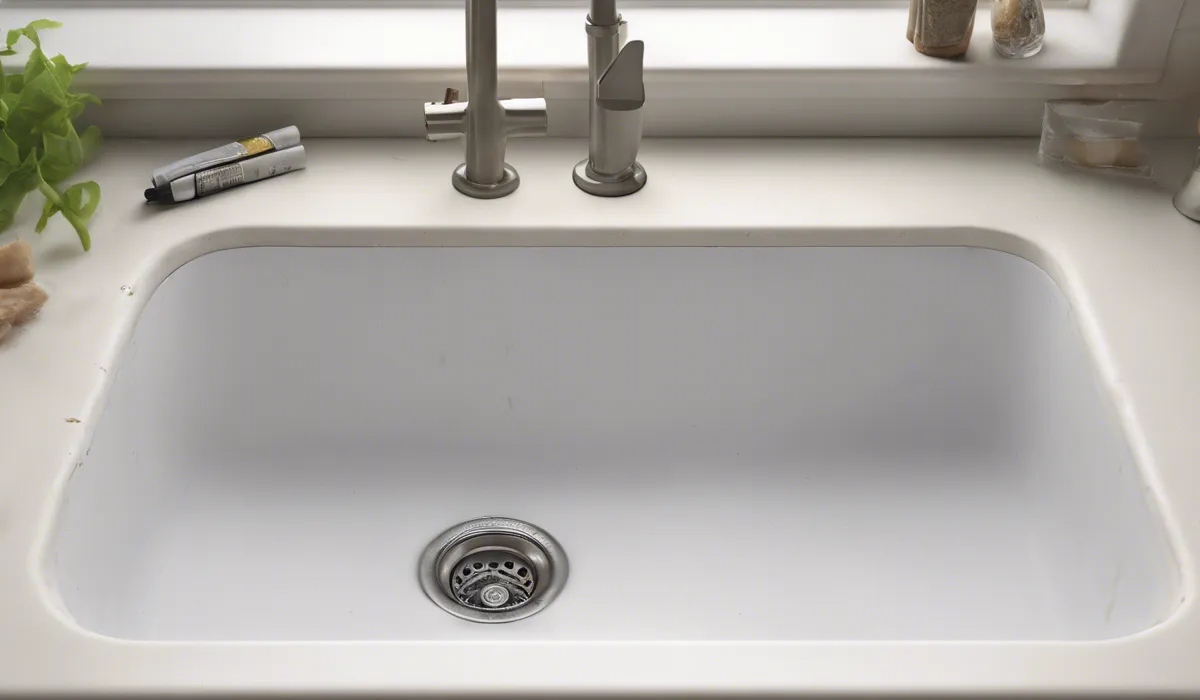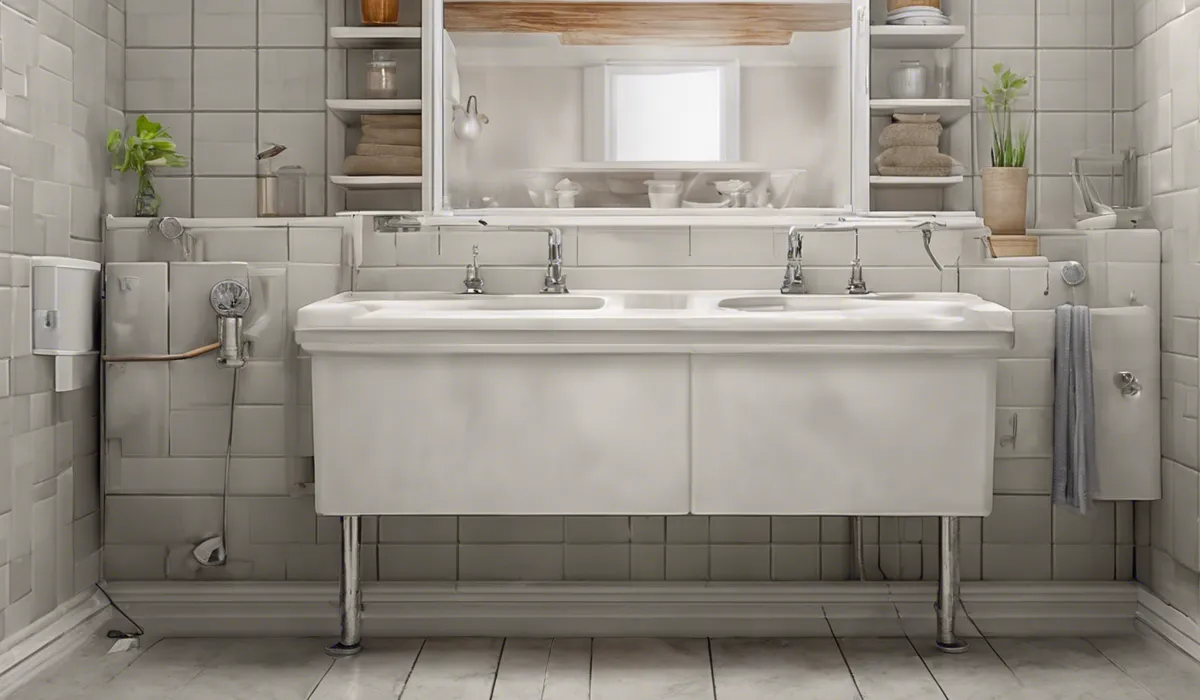To fix mold under a sink, first identify and repair the moisture source. Clean the area with a mold-killing solution like diluted bleach. Dry thoroughly, then apply an anti-mold paint or sealant to prevent recurrence.
Identifying the Mold Problem

Common Mold Varieties Under Sinks
Mold thrives in dark, damp environments, making the area under your sink a prime spot for these pesky fungi.
The most common types of mold found in such areas include Cladosporium, Penicillium, Aspergillus, and the infamous Stachybotrys chartarum, also known as black mold.
These varieties can appear as black, green, white, or even orange spots, and they each require prompt attention to prevent health hazards.
Signs of Mold Growth
Be on the lookout for discoloration on the walls, a musty odor, or any visible growth that resembles a fuzzy or slimy patch.
Peeling or bubbling paint and warping materials are also tell-tale signs that mold may be lurking underneath your sink.
Causes of Mold in Under Sink Areas
Mold under the sink often results from persistent dampness. Leaky pipes, condensation, and spills that aren’t cleaned up quickly can all contribute to the growth of mold.
Poor ventilation exacerbates the problem by trapping humid air, creating an ideal breeding ground for mold spores.
Health Risks of Mold Exposure
Inhaling or touching mold spores can lead to allergic reactions, respiratory issues, and in severe cases, can affect the immune system.
It is especially dangerous for individuals with asthma or allergies, as it can cause more frequent and severe attacks.
Removing the Mold

Safety Measures for Mold Removal
Before you start the mold removal process, protect yourself with gloves, a mask, and eye protection. Ensure the room is well-ventilated to avoid inhaling spores.
Materials and Tools Required
You’ll need water, bleach or a commercial mold-killing solution, a scrub brush, a spray bottle, and protective gear. Gather all materials beforehand to streamline the cleaning process.
Cleaning and Removing Mold
Start by mixing one part bleach with three parts water in a spray bottle. Apply the solution to the moldy area and let it sit for a few minutes.
Scrub the surface with a brush to remove the mold. After scrubbing, wipe the area clean with a damp cloth. It’s crucial to dry the area thoroughly to prevent mold from returning.
Ensuring Complete Mold Eradication
After cleaning, inspect the area for any missed spots. It may be necessary to repeat the cleaning process to ensure all mold is removed.
Once the area is mold-free and dry, consider applying an anti-mold paint or sealant to resist future growth.
Preventing Future Mold Growth

Addressing Moisture and Leaks
Fixing leaks promptly is the first step in mold prevention. Regularly check your plumbing for signs of wear and tear, and replace any worn-out parts immediately.
Improving Under-Sink Ventilation
Good airflow is vital in keeping the area under your sink dry. If possible, install a vent or use a dehumidifier to help reduce moisture levels. Opening cabinet doors occasionally can also promote air circulation.
Maintenance Best Practices
Regular cleaning and inspection of the sink and plumbing can prevent water damage and mold growth.
Be proactive in keeping the area under your sink organized and clutter-free, which makes it easier to spot and address leaks or dampness quickly.
Choosing Mold-Resistant Materials
When it comes to materials, consider mold-resistant options for cabinetry and sealants. These products are designed to withstand moisture and can be a worthwhile investment in preventing mold recurrence.
In summary, to fix mold under a sink, it’s essential to identify the type and source of the mold, take proper safety precautions, and use the right materials and methods to remove it.
Once eradicated, taking steps to prevent future growth will help maintain a healthy and safe environment in your home.
FAQs About Fixing Mold Under Sink
What causes mold to grow under a sink?
Mold growth under a sink is typically caused by a continuous moisture source, such as a leaky pipe or faucet, high humidity, or condensation.
How can I prevent mold from growing under my sink again?
To prevent mold recurrence under your sink, repair any leaks promptly, maintain low humidity levels, ensure proper ventilation, and consider using anti-mold paint or sealant after cleaning.
What is the best mold-killing solution to use for cleaning under a sink?
A diluted bleach solution is effective for killing mold. Ensure the area is well-ventilated when applying the solution.
Can I paint over mold under the sink?
No, you should not paint over mold. Clean and remove the mold thoroughly before applying an anti-mold paint or sealant to prevent future growth.
How do I know if the mold under my sink is completely removed?
You’ll know the mold is completely removed when you can no longer see or smell it, and the source of moisture has been fixed to prevent new growth.
Final Thoughts
Addressing mold under a sink involves locating and remedying the source of moisture. Once fixed, thoroughly clean the affected area with a solution designed to kill mold, such as diluted bleach.
Ensuring the space is completely dry, proceed by applying an anti-mold paint or sealant to safeguard against future mold growth.
